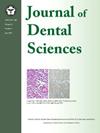Effects of 3D-printers and manufacturer-specified post-curing units on the dimensional accuracy, compressive strength, and degree of conversion of resin for fixed dental prostheses
IF 3.4
3区 医学
Q1 DENTISTRY, ORAL SURGERY & MEDICINE
引用次数: 0
Abstract
Background/purpose
The 3D printer and post-curing unit are important factors in producing the best 3D printed crowns. To explore the effects of different combinations of 3D-printers and manufacturer-specified post-curing units on the dimensional accuracy, compressive strength, and degree of conversion (DC%) of 3D-printable resin for fixed dental prostheses.
Materials and methods
Specimens were designed in 2 sizes and additively-manufactured using 2 digital light processing (DLP) 3D-printers (NextDent 5100, ND and PrintinDLP+, PN). The 3D-printed samples were polymerized using 2 different post curing units (LC-3D Print box, N and PrintInCure+, P). Dimensional accuracy was evaluated under an optical microscope, while compressive strength was determined using a universal testing machine. Fourier transform infrared spectroscopy was used to analyze the resin molecular bond characteristics and DC%. Statistical analysis, including ANOVA and Tukey's HSD post-hoc tests (P < 0.05).
Results
Significant dimensional variations were observed for both square and rectangular samples (P < 0.001). The ND-P showed the greatest ductility and relatively high maximum stress. The fracture strengths were ND-N: 181.55 ± 8.37 MPa, ND-P: 151.54 ± 2.06 MPa, PN-N: 175.51 ± 12.44 MPa, and PN-P: 127.84 ± 10.10 MPa (P < 0.001). Surface inspection at 200 × magnification revealed subtler fault lines in ND-N and PN-P. FTIR analyses confirmed DC% was highest for ND-N (79.70 ± 1.02%) and PN-N (78.12 ± 0.94%), intermediate for ND-P (73.24 ± 0.89%) and PN-P (71.06 ± 1.67%).
Conclusion
Post-curing units had a greater impact on dimensional accuracy, strength, and polymerization than the choice of 3D-printer. Optimal resin properties require careful optimization of post-curing parameters and equipment.
3d打印机和制造商指定的后固化单元对固定义齿的尺寸精度、抗压强度和树脂转化程度的影响
背景/目的3D打印机和后固化装置是制作最佳3D打印冠的重要因素。探讨3d打印机和制造商指定后固化单元的不同组合对固定义齿3d打印树脂尺寸精度、抗压强度和转化率(DC%)的影响。材料和方法采用2种尺寸的样品设计,并使用2台数字光处理(DLP) 3d打印机(NextDent 5100, ND和PrintinDLP+, PN)进行增材制造。使用2种不同的后固化单元(LC-3D Print box, N和PrintInCure+, P)对3d打印样品进行聚合。尺寸精度在光学显微镜下评估,而抗压强度是用万能试验机确定的。利用傅里叶变换红外光谱分析树脂的分子键特性和DC%。统计分析,包括方差分析和Tukey’s HSD事后检验(P <;0.05)。结果在正方形和矩形样本中均观察到显著的尺寸变化(P <;0.001)。ND-P具有最大的延展性和较高的最大应力。断裂强度分别为:ND-N: 181.55±8.37 MPa, ND-P: 151.54±2.06 MPa, PN-N: 175.51±12.44 MPa, PN-P: 127.84±10.10 MPa (P <;0.001)。在200倍放大镜下的表面检查显示ND-N和PN-P中有较细微的断层线。FTIR分析证实,ND-N(79.70±1.02%)和PN-N(78.12±0.94%)的DC%最高,ND-P(73.24±0.89%)和PN-P(71.06±1.67%)的DC%居中。结论后固化单元对尺寸精度、强度和聚合度的影响大于3d打印机的选择。最佳树脂性能需要仔细优化后固化参数和设备。
本文章由计算机程序翻译,如有差异,请以英文原文为准。
求助全文
约1分钟内获得全文
求助全文
来源期刊

Journal of Dental Sciences
医学-牙科与口腔外科
CiteScore
5.10
自引率
14.30%
发文量
348
审稿时长
6 days
期刊介绍:
he Journal of Dental Sciences (JDS), published quarterly, is the official and open access publication of the Association for Dental Sciences of the Republic of China (ADS-ROC). The precedent journal of the JDS is the Chinese Dental Journal (CDJ) which had already been covered by MEDLINE in 1988. As the CDJ continued to prove its importance in the region, the ADS-ROC decided to move to the international community by publishing an English journal. Hence, the birth of the JDS in 2006. The JDS is indexed in the SCI Expanded since 2008. It is also indexed in Scopus, and EMCare, ScienceDirect, SIIC Data Bases.
The topics covered by the JDS include all fields of basic and clinical dentistry. Some manuscripts focusing on the study of certain endemic diseases such as dental caries and periodontal diseases in particular regions of any country as well as oral pre-cancers, oral cancers, and oral submucous fibrosis related to betel nut chewing habit are also considered for publication. Besides, the JDS also publishes articles about the efficacy of a new treatment modality on oral verrucous hyperplasia or early oral squamous cell carcinoma.
 求助内容:
求助内容: 应助结果提醒方式:
应助结果提醒方式:


